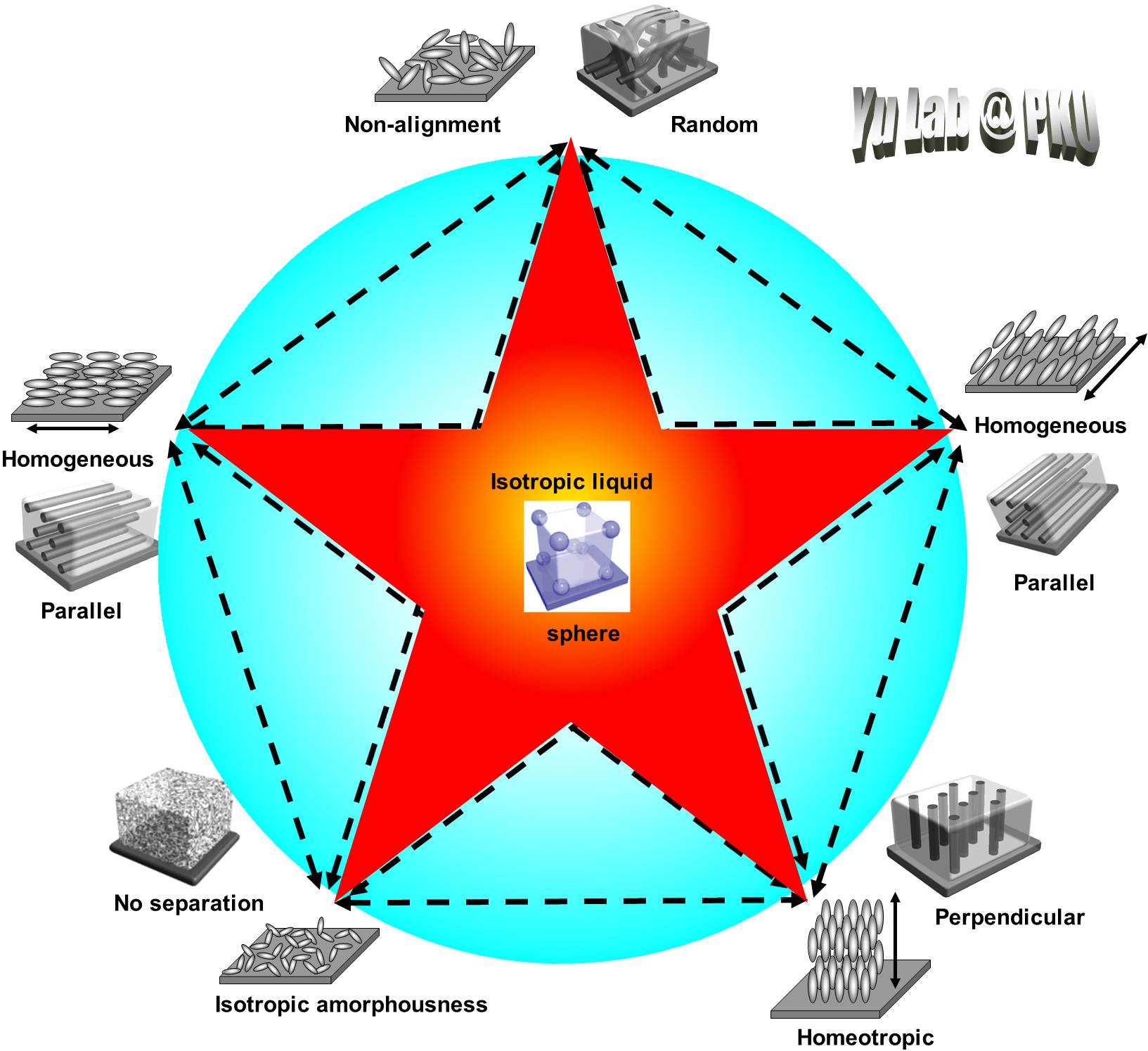主页(Homepage)
于海峰(CV)
研究成员(Group Member)
杂志封面 (Cover pictures)
杂志论文 (Journal Paper)
书籍与专利(Book&Patent)
最新消息(News)
2014-2015(Past news)
2012-2013(Past news)
研究方向(Research)
(1)Photoalignment
(2)Block Copolymer
(3)LC polymer
(4)Soft Matter
仪器设备(Instruments)
图片赏析(Research pictures)
教授课程(Teaching)
招聘信息 (Openings)
联系我们 (Contact us)
Functional block copolymers (BCs) are among novel types of macromolecules of industrial and academic interest because they provide opportunities to study the nanostructure formation and control under the influence of more than one driving force, e.g., the effect of microphase-separated nanostructures on functionality, and vice versa, the influence of a specific functionality on the formation of diverse nanostructures. Introducing an azobenzene block as one of constituent segments into the functional BCs, azobenzene BCs can be easily obtained, which are expected to bring the well-characterized photoisomerization of the azobenzene moiety into the microphase separation of BCs. Moreover, if the azobenzene block can form mesogenic phases, the regular periodicity of liquid-crystalline (LC) ordering influences on the microphase-separated nanostructures, making it possible to self-assemble into periodic nanostructures on the macroscopic scale. In bulk films of LCBCs, the interplay between the microphase separation and the elastic deformation of LC ordering, known as supramolecular cooperative motion (SMCM), enables one to form more hierarchical structures with photoresponsive properties, which offers novel opportunities to control supramolecular self-assembled nanostructures. Combining the excellent properties of azobenzene polymers with microphase separation, azobenzene BCs may find diverse applications in advanced technology as well as newly promising nanotechnology.
1. 微观相分离(Microphase separation)
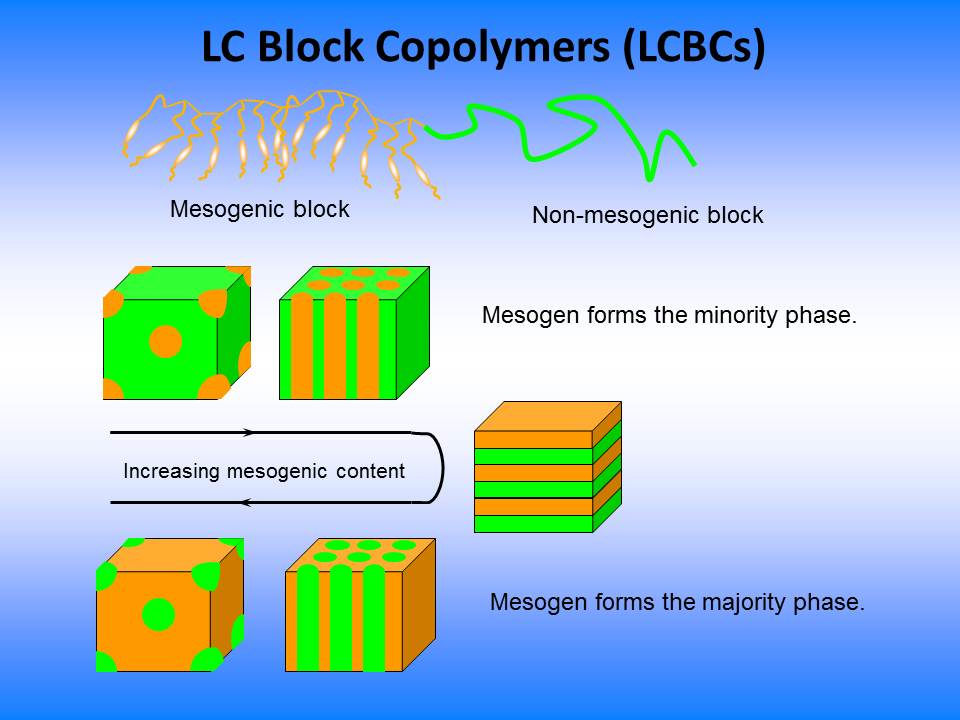
2. 液晶相为分散相时(LC phase as the minority phase)
2.1 比相同液晶基元含量的无规共聚物更易显示液晶性
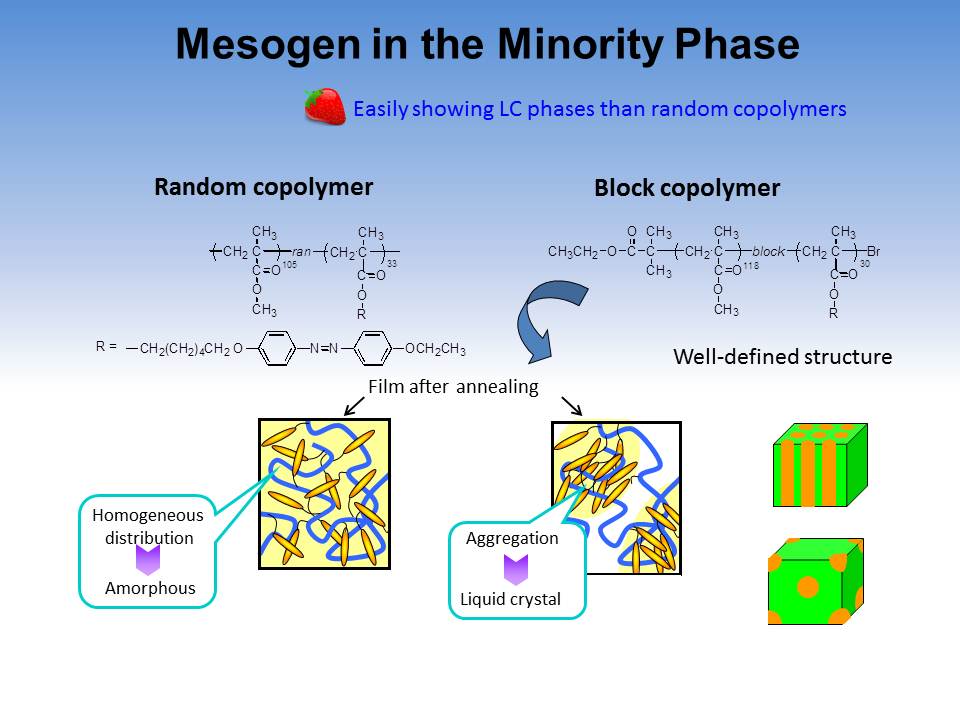
2.2 在纳米微观相分离内实现光控分子协同运动
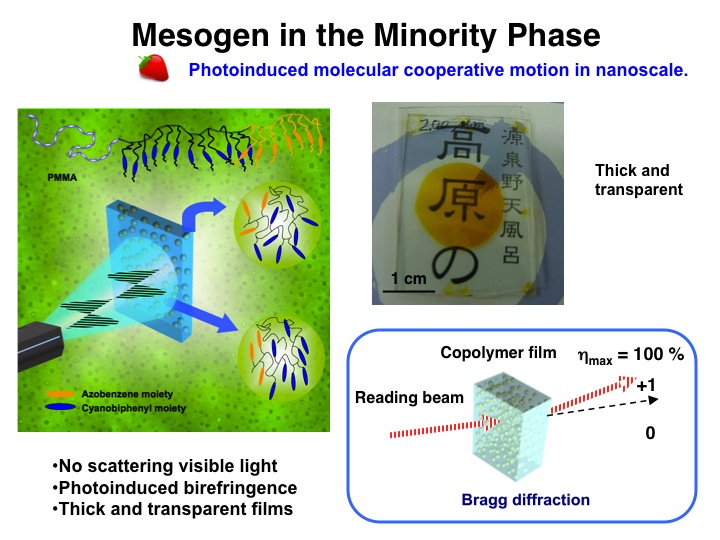
2.3 新型的微观相分离结构
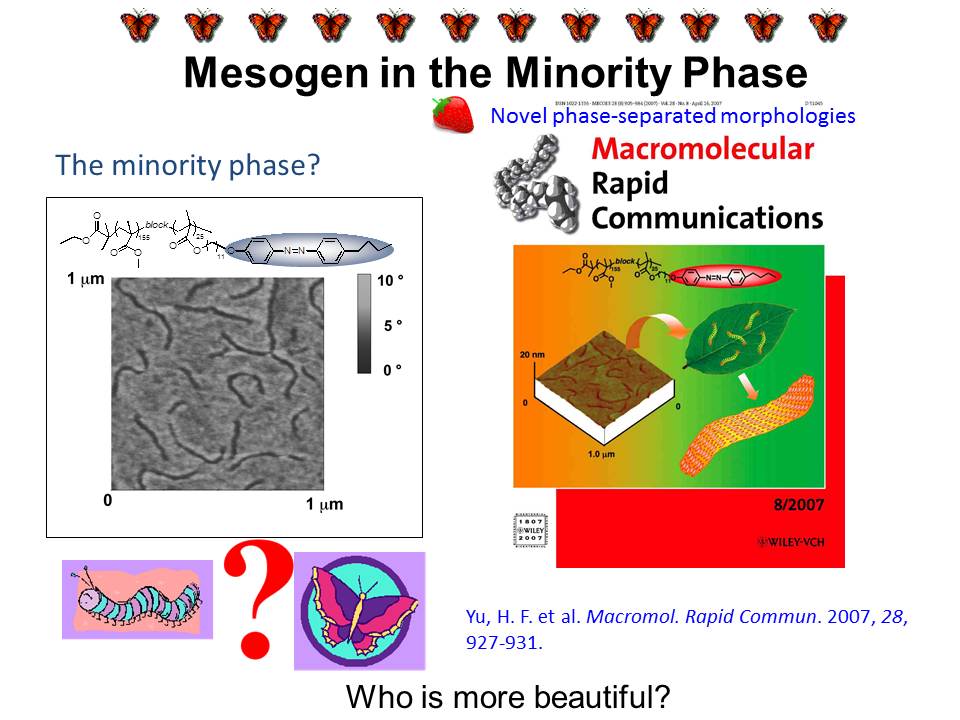
2.4 不产生表面起伏结构(No surface-relief formation)
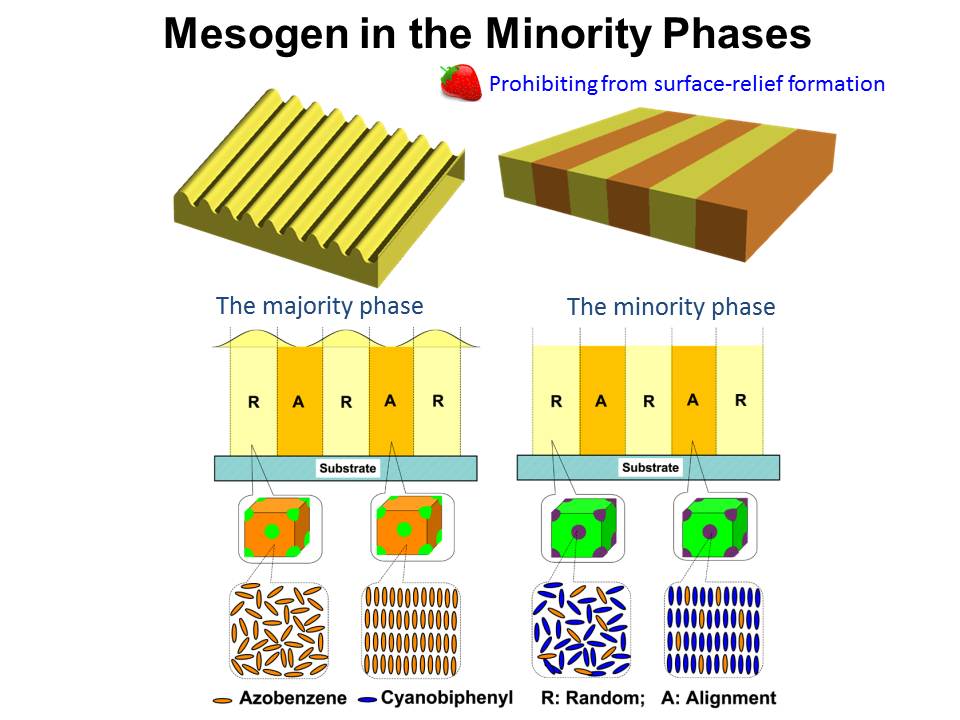
3. 液晶相为连续相时(LC phase as the majority phase)
3.1 超分子协同运动(Supramolecular cooperative motion)
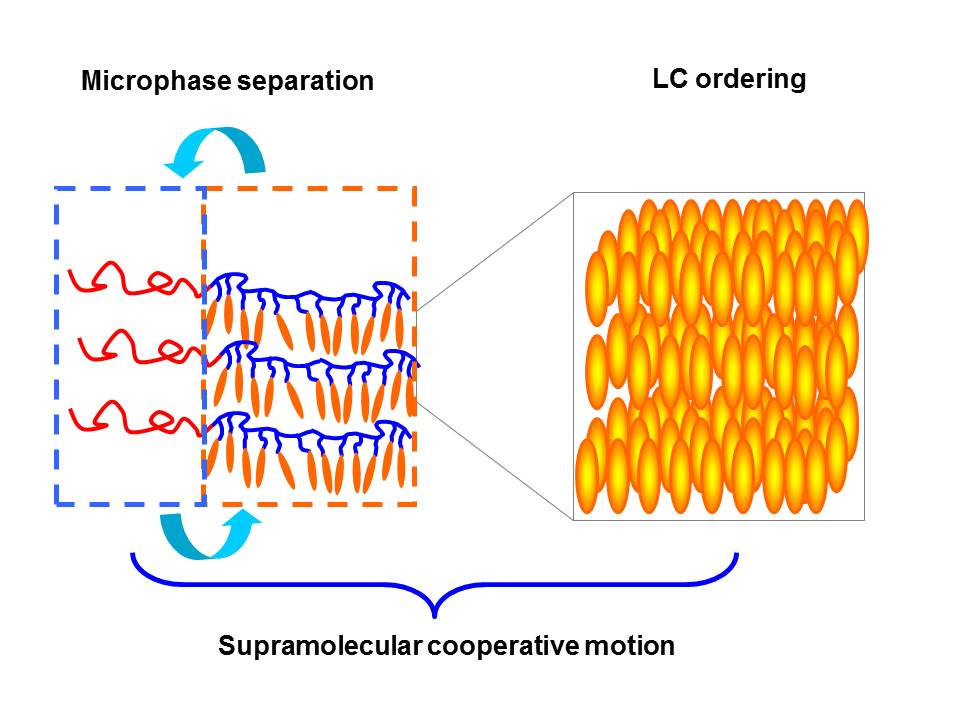
3.2 液晶面外排列时(LC in out-of-plane alignment)
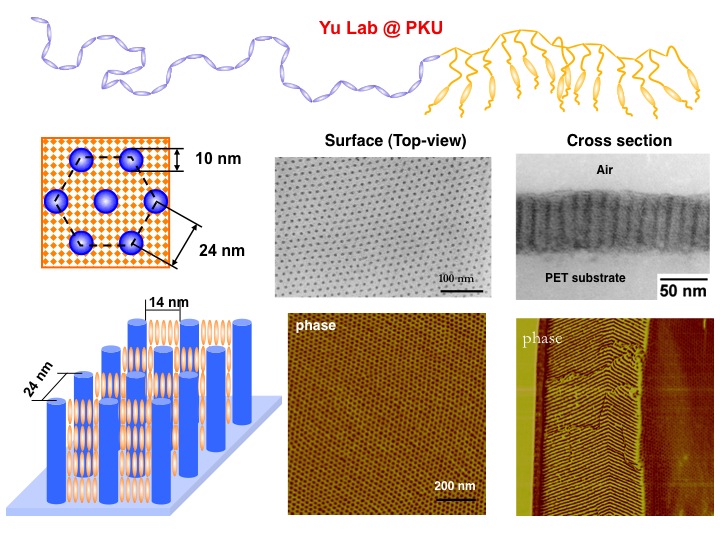
3.3 液晶面内排列时(LC in-plane homogeneous alignment )
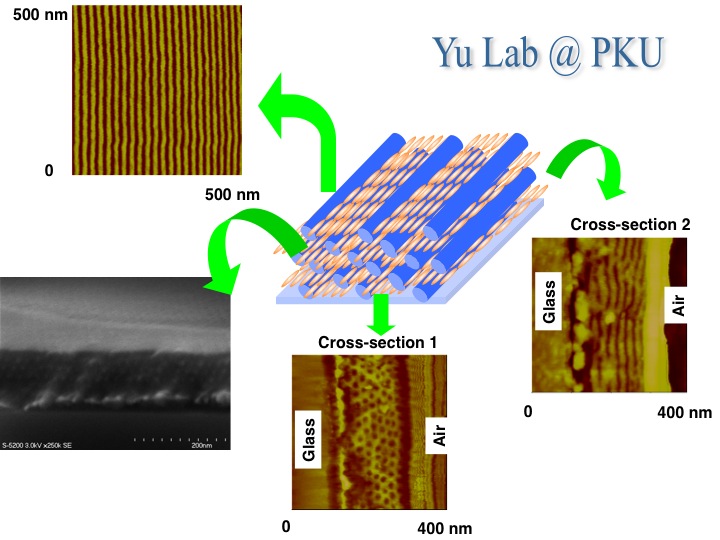
3.4 液晶光取向时(Photoalignment)
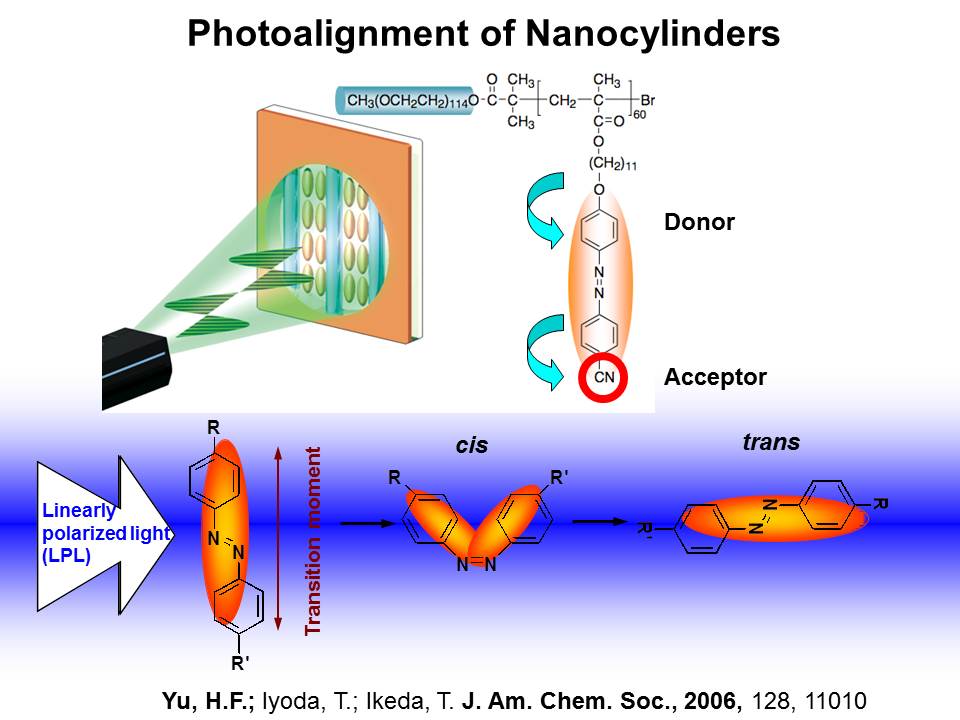
3.5 液晶为一维有序的向列相时(1D ordered nematic phase)
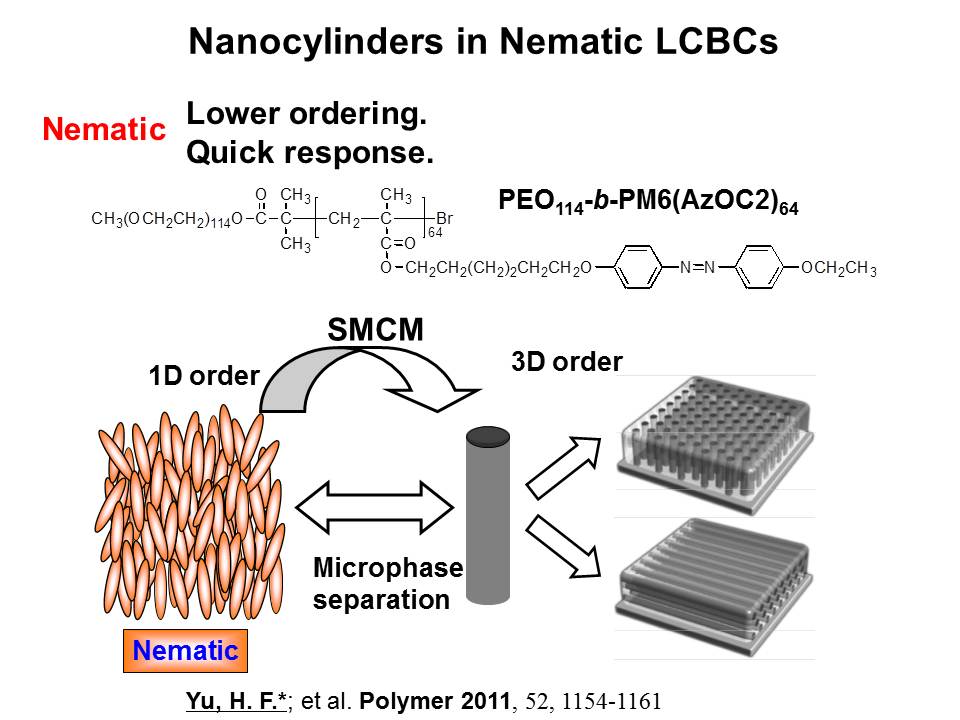
3.6 液晶基元含有5CB结构时(LC containing 5CB structures)
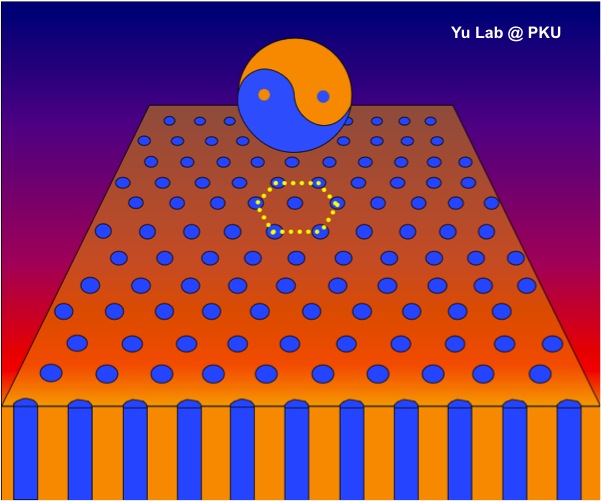
3.7 液晶基元含有氢键时(LC containing hydrogen-bonding)
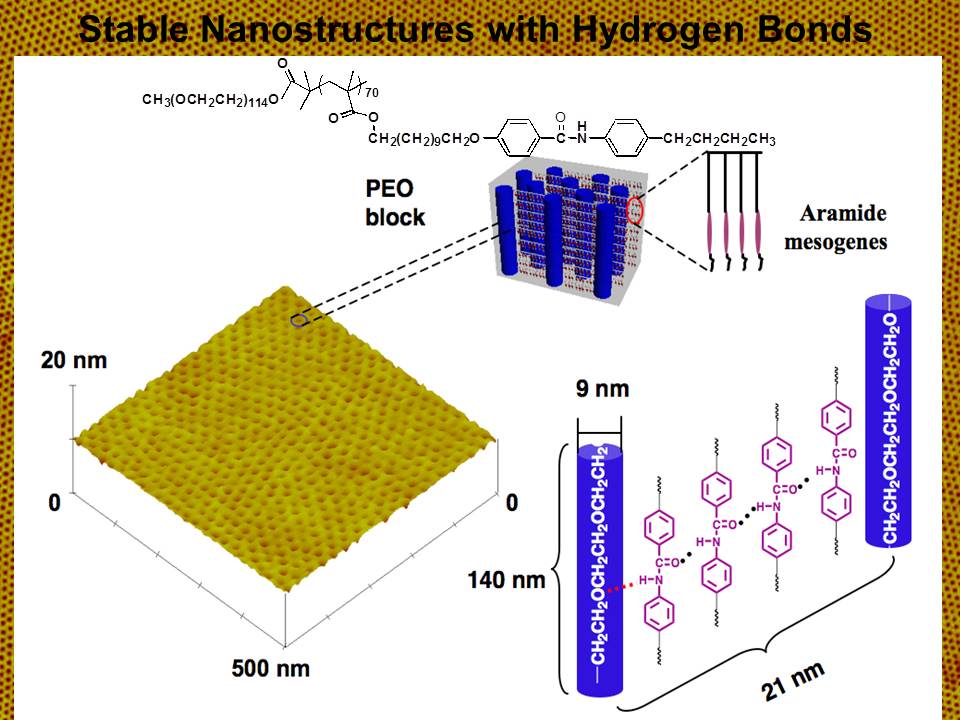
4 液晶与纳米相分离结构的相互左右关系图(Relationship between LC orientation and microphase-separated nanostructures)
